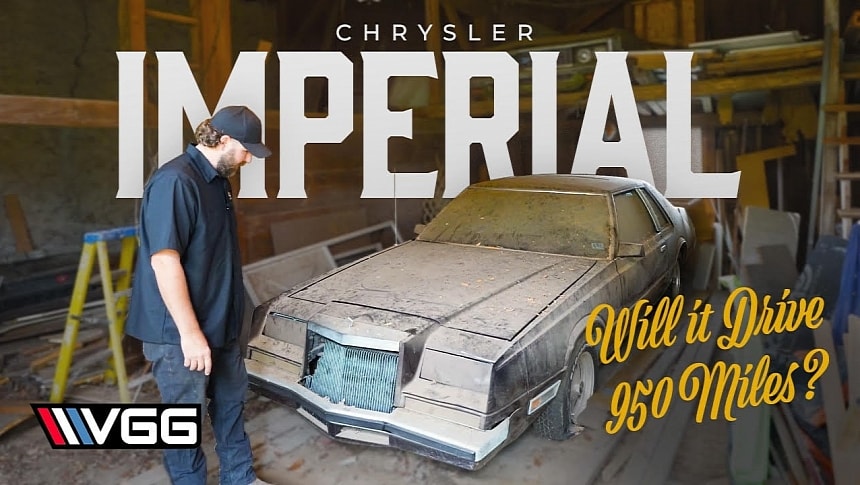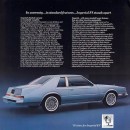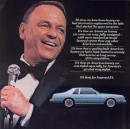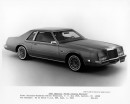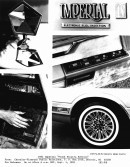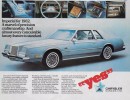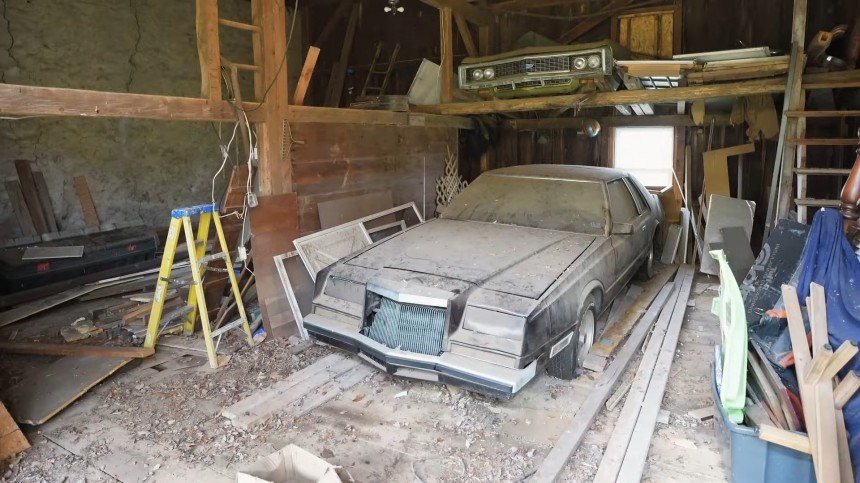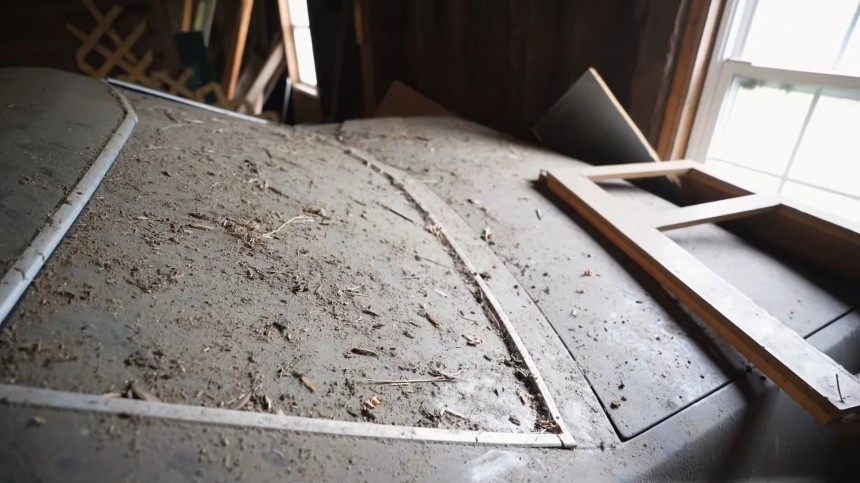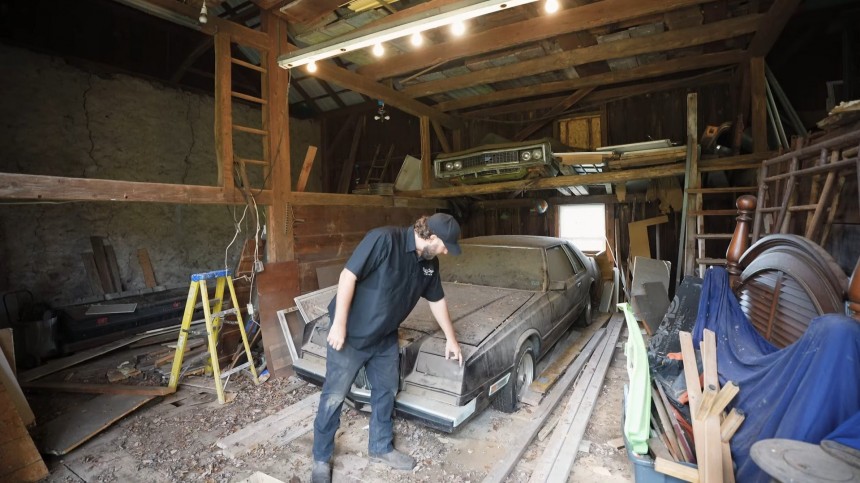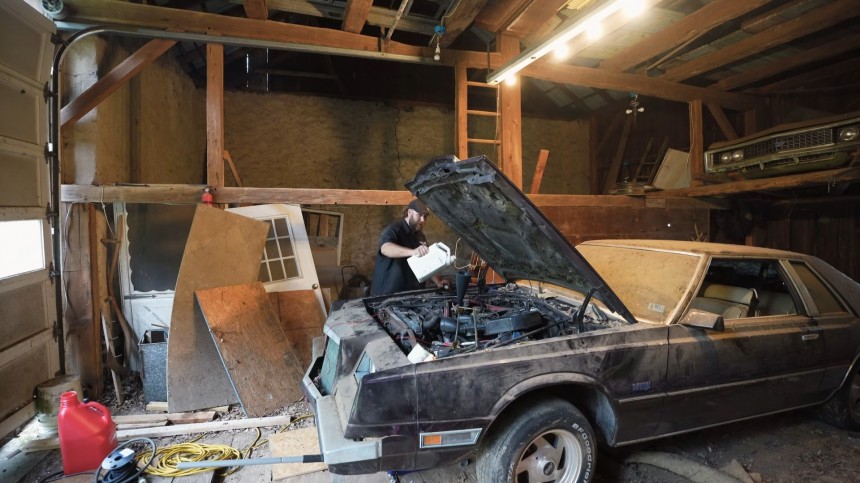Following a five-year sabbatical, Imperial made a spectacular comeback in 1981 with a personal luxury car that brooded the tech revolution the auto industry was about to experience. However, being at the forefront of development can be a risky endeavor, and the 1981-1983 Chrysler Imperial is the flop to prove it. Not too many were built, and who knows how many are left around today, but here’s one that’s been sitting for two decades or so in a barn.
When Lee Iacocca took over as Chrysler's boss, the corporation was in dire need of help, and the new Chairman of the Board appeared before the Senate to plea for help. He got the money, and some of it went into the Imperial. ChryCo estimated that around 21,000 units would leave the assembly lines in the first year alone. As it turned out, a mere 12,385 units left the Windsor, Canada, facility during the three-year production.
Mother Mopar didn’t spare any expense in imbuing the car with a rich feel, from signing Mark Cross and Cartier to designing interiors and crystal ornamentation to getting Frank Sinatra to be the face of the new model. (However, the singer did it out of courtesy to his friend Lee Iacocca for a one-dollar deal.) The car should have been the talk of the town, and it was, but not for the reasons Chrysler expected it to be.
First and foremost, the new Chrysler product put a new twist on an old engine, hoping it would learn new tricks. The 5.2-litre V8 (spelled the British way, not ‘liter’) was the same trusty 318-cube motor that had been around for some sixteen years when the new Imperial came around. However, its fuel system was entirely new.
Not new to the powerplant architecture and not new to Chrysler; not even new to America – it was new to the entire Planet Piston. Electronic Fuel Injection was the latest wonder technology that should have put the 1981 Imperial ahead of its time, as well as competitors and anything else in the automotive industry. Instead, the radical and insufficiently tested technological marvel was a flop of grand proportions.
Computers were deployed to measure, determine, and regulate the gasoline and air mixture in the throttle bodies, but the early cybernetic brains didn’t work well with the complicated fuel system. The electronic fuel injection quickly turned into fuel infection, and customers began complaining about it. Chrysler promptly found out the hard way that people who could afford $18,311 in 1980 could also get a powerful attorney at law to defend their case in court.
The corporation offered warranty retrofitting of two-barrel carburetion instead of the annoying electronics, and many customers chose the classic setup. The problem was so severe that it almost brought Frank Sinatra and Lee Iacocca to irreparable odds after Frank’s personal Imperial—the very first off the assembly line—unexpectedly broke down during one of the star’s public appearances.
Chrysler allegedly targeted a specific niche of the audience with the new car that broke ground in August 1980: male, married, with a median age of around 50, with college or higher education, and a professional or highly skilled technician. However, one example from Pennsylvania ended up in the hands of a sixteen-year-old high schooler as his first car.
Around twenty years ago, the sumptuous Chrysler was parked for good – on the second floor of an 1880s barn – and never seen about since. Naturally, a gem like this would make the object of a rescue operation from one of YouTube’s large army of old Detroit iron foragers. Derek Bieri from Vice Grip Garage found, bought (sight unseen), fixed, drove, and parked this 42-year-old Mopar home 950 miles (some 1,530 km) from its Pennsylvania shed to the rescuer’s base in Tennessee.
Unsurprisingly, the car had some issues after sitting since the early 2000s or thereabouts. When the vlogger found it, the car had 91,701 miles on it (147,578 kilometers). It also had a tag mentioning that the wide-ratio TorqueFlite transmission had been rebuilt. It was the only gearbox offered for the car, just as the 318 was the only engine choice. The 2.2:1 rear gearing made the luxury car a cruise-friendly automobile, and it somewhat shoved under the rug the 140 anemic horses put out by the fuel-injected 5.2-liter V8. 245 lb-ft (332 Nm) were just as gentle on the tires as the car was on its occupants during a ride.
The Imperial came with the longest list of standard features of any production luxury car at the time; Chrysler claimed the equipment would fill two pages (typed in single space). The only option was the sliding sunroof. Guess what—this example found by Derek Bieri just so happens to have that single add-on. Granted, it’s not in the greatest of conditions—the headliner is all gone, but it’s definitely a car worthy of a solid project.
Even the electronic digital cluster (another industry first) works, and the car fires up after some tweaks to its fuel system (the tank probably needs to be replaced). Nonetheless, the important thing is that the car runs, drives, and gets home safely. That’s the merit of the two-barrel carb (and the vlogger’s, of course) because the original Electronic Fuel Injection was a nightmare.
As advertised, it should have made the car virtually balk-proof and stall-proof, thanks to its exact fuel delivery and spark advance calculations. However, the early model could describe an electronically modulated mechanical injection system more accurately. Fuel flow was governed by a variable computer-controlled pump (separate from the fuel pump), and any issues, no matter how tiny, with it would immediately trigger a severe rich-burn condition.
One common issue was the malfunction of the Mass Airflow sensor (installed in the air inlet); whenever the computer detected a ‘loss’ of airflow, it would automatically shut down the fuel injection. The EFI on the Imperial was such a failure that Chrysler recalled these vehicles and put the low-tech, earth-age Carter BBD carburetors (California emissions cars were converted to four-barrel Carter Thermoquad). The Electronic Fuel Injection was Chrysler’s pride and joy in 1980, as it had been developed by the division that also engineered the computers for the Apollo program. They might have aimed for the Moon, but the Imperial missed - and didn’t hit the stars either.
Between August 1980 and April 1983, Chrysler built just a little over half of what it had predicted to sell for the 1981 model year alone. Interestingly, over half of the 12,385 examples (6,241) were assembled in 1980. Over the following 29 months, between January 1981 and April 1983, the production lingered at a couple of hundred cars a month, only twice getting past the 500-unit mark (July and November 1981).
Mother Mopar didn’t spare any expense in imbuing the car with a rich feel, from signing Mark Cross and Cartier to designing interiors and crystal ornamentation to getting Frank Sinatra to be the face of the new model. (However, the singer did it out of courtesy to his friend Lee Iacocca for a one-dollar deal.) The car should have been the talk of the town, and it was, but not for the reasons Chrysler expected it to be.
First and foremost, the new Chrysler product put a new twist on an old engine, hoping it would learn new tricks. The 5.2-litre V8 (spelled the British way, not ‘liter’) was the same trusty 318-cube motor that had been around for some sixteen years when the new Imperial came around. However, its fuel system was entirely new.
Computers were deployed to measure, determine, and regulate the gasoline and air mixture in the throttle bodies, but the early cybernetic brains didn’t work well with the complicated fuel system. The electronic fuel injection quickly turned into fuel infection, and customers began complaining about it. Chrysler promptly found out the hard way that people who could afford $18,311 in 1980 could also get a powerful attorney at law to defend their case in court.
The corporation offered warranty retrofitting of two-barrel carburetion instead of the annoying electronics, and many customers chose the classic setup. The problem was so severe that it almost brought Frank Sinatra and Lee Iacocca to irreparable odds after Frank’s personal Imperial—the very first off the assembly line—unexpectedly broke down during one of the star’s public appearances.
Around twenty years ago, the sumptuous Chrysler was parked for good – on the second floor of an 1880s barn – and never seen about since. Naturally, a gem like this would make the object of a rescue operation from one of YouTube’s large army of old Detroit iron foragers. Derek Bieri from Vice Grip Garage found, bought (sight unseen), fixed, drove, and parked this 42-year-old Mopar home 950 miles (some 1,530 km) from its Pennsylvania shed to the rescuer’s base in Tennessee.
Unsurprisingly, the car had some issues after sitting since the early 2000s or thereabouts. When the vlogger found it, the car had 91,701 miles on it (147,578 kilometers). It also had a tag mentioning that the wide-ratio TorqueFlite transmission had been rebuilt. It was the only gearbox offered for the car, just as the 318 was the only engine choice. The 2.2:1 rear gearing made the luxury car a cruise-friendly automobile, and it somewhat shoved under the rug the 140 anemic horses put out by the fuel-injected 5.2-liter V8. 245 lb-ft (332 Nm) were just as gentle on the tires as the car was on its occupants during a ride.
Even the electronic digital cluster (another industry first) works, and the car fires up after some tweaks to its fuel system (the tank probably needs to be replaced). Nonetheless, the important thing is that the car runs, drives, and gets home safely. That’s the merit of the two-barrel carb (and the vlogger’s, of course) because the original Electronic Fuel Injection was a nightmare.
As advertised, it should have made the car virtually balk-proof and stall-proof, thanks to its exact fuel delivery and spark advance calculations. However, the early model could describe an electronically modulated mechanical injection system more accurately. Fuel flow was governed by a variable computer-controlled pump (separate from the fuel pump), and any issues, no matter how tiny, with it would immediately trigger a severe rich-burn condition.
Between August 1980 and April 1983, Chrysler built just a little over half of what it had predicted to sell for the 1981 model year alone. Interestingly, over half of the 12,385 examples (6,241) were assembled in 1980. Over the following 29 months, between January 1981 and April 1983, the production lingered at a couple of hundred cars a month, only twice getting past the 500-unit mark (July and November 1981).
